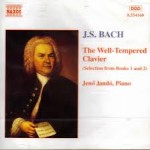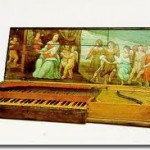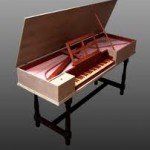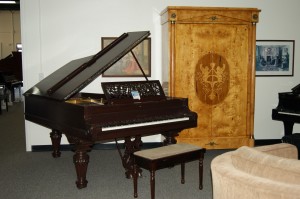The Virginal
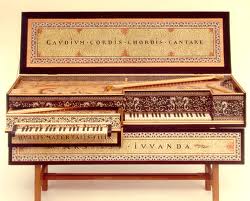
The Virginal
The precursor to the harpsichord came in the 1400’s known as the Virginal or Virginals. The logic behind the first virginals came in 1460 when a writer described it in a letter from Paulus Paulirinus of Praguein relation to the clavichord. History books can differ in their opinions or ideas of its origin.
Quite a bit of music was written on a virginal because of its size and ease of transport. This is a larger model of a virginal. Some were quite decorative like this one while others were quite simple in their design and much smaller.
The tone quality or the virginal as compared to the clavichord was/is quite different. While the clavichord struck the strings the virginal was closer in tone to the harpsichord. Later as people began to want more sound we started making the harpsichord with longer strings and a larger soundboard with more depth of sound.
The virginal was identical to the harpsichord in the way it was made with the plucking of the strings rather than the clavichord mechanism which struck the strings like the piano.
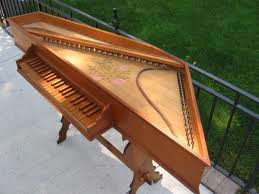
A Smaller Virginal
The virginal was very popular during the early Baroque period although like the clavichord and by a large part the harpsichord the tone was to light to be heard with the other instruments and even more difficult in larger public performances.
If you do a quick search on the virginal you will quickly see many different variations of this cool instrument. It is difficult to imagine that once this was cutting edge technology and this was a privilege to own. The tone quality of this instrument was among the best available in a keyboard instrument at this point in the 1400’s.
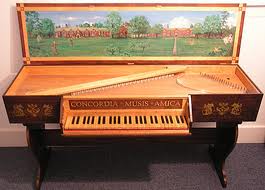 Art in a Virginal
Art in a Virginal
However, music for the virginal and the clavichord would be written for many years to come BECAUSE of the tone. You may also note that many, MANY works of art show a young lady sitting in front of an instrument that most people assume is a harpsichord or clavichord but, as it turns out is actually a virginal.
Ric Overton
http://PianoSD.com


